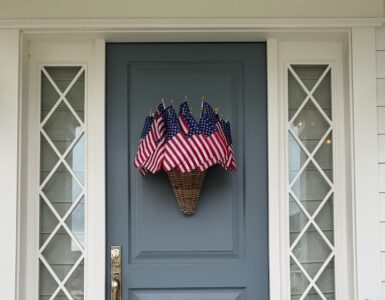Teresa Hunsaker, USU Extension, Weber County, Family and consumer Science Educator gives tips on Studio 5.
EXTERIOR OF GRILL
Black surface-rot iron type:
Use a towel and Gojo waterless hand cleaner. Make sure there are no granules as they will scratch the outside of your grill. Use one towel to rub a generous layer on the grill. Then use a separate towel to take off the excess cleaner. You should be able to rub it off like wax.
After years of being exposed to the outside elements, oxidation often forms on the outside of the grill. A wire brush is the best tool to remove this.
Because most grills are used around a lot of cooking oils and grease, it is a good idea to wipe everything down with denatured alcohol before painting.
Check for peeling paint. If needed, purchase paint and gather wire brushes,
Stainless Steel:
There are plenty of methods for cleaning stainless steel to be found on the Internet. Here are some tested products to consider. The following are a list of products that have been found to work quite well. For best results you will probably have to go through a multi stage process to get the grill in like new condition. Your results may vary depending on the type of steel your grill is made from.
Tested Products: C.L.R., Pledge, Orange Glo Hardwood Floor Cleaner, Vinegar, Windex, Hand Sanitizer, Goo Gone, Soap and Water, Stainless Steel Cleaner, and Grate Chef Stainless Steel Wipes, Bar Keepers Friend.
First, rinse the grill with water and wipe it down with a rag or soft bristle brush—to remove any loose dirt and particles.
For Heavy Grime—most products didn’t work very well, Orange Glo worked fairly well, and hand sanitizer worked quite well. Place a small dab on a rag and wipe, the grime will wipe away. The downside is that it seems to leave a film, it does come off easily with any of the light dirt cleaners and good rinsing.
Light Dirt easily cleaned up with Steel Cleaner, Grate Chef Stainless Steel Wipes and Windex. The wipes left a protective coating that needs to be wiped with a dry rag.
Smoke Stains on the back of the hood were not touched by any product but C.L.R. this didn’t seem effective on anything at first glance. C.L.R. needs to sit on the stain for a few minutes to begin working. To accomplish this on the slanted part of the hood, I sprayed it onto a paper towel and stuck the wet towel to the hood, and smoothed it down. Let it sit for at least 5 minutes and clean with a another paper towel, rinse with water (or it leaves a film), repeat in needed. Then clean with the cleaner of your choice.
* CLR is a harsh cleaner that was meant for lime, calcium, hard water, and rust buildup. It will clean burned on food products off as well—but again, it is a harsh cleaner.
Finally if any scratches or discolorations remain you will need to use a Stainless Steel Polish.
If you clean the outside of your grill on a frequent basis, you will be able to maintain a great appearance with any of the cleaners from the light category.
INTERIOR OF GRILL
Cleaning the Grates
The grates need to be cleaned completely after every use. This prevents food from sticking on your grill making it much easier to cook on. While there are many products you can use the best isa really good stiff wire brush will do the trick. The best way to perform this task is after you grill, rather than before. Let the grill cool down a bit, but is still warm, take your brush and clean off any remaining food particles. It is much easier to clean off food particles while warm rather after they have cooled and been allowed to harden on the grate. If you have a cast iron grate clean completely then, brush on some oil with a paper towel to keep your grate in proper shape. Bare cast iron needs to be inspected regularly because they are more likely to rust. Then use the “clean” setting to preheat your grill. It will burn off stuff that has fallen down into the grill, but it doesn’t really clean it—it just makes cleaning it easier.
Cleaning the Remainder of the Interior
Frequently, lift out the cooking grate and clean off the barrier above the burners. There could be lava rock, briquettes, or some variation of metal plates. It should get cleaned of the cooked on grease and food particles periodically. Dirty lava rocks and briquettes can leave an off flavor to your food.
Occasionally clean the burner to keep the burner holes clean. The flame coming from the burner should be blue, if the flame is orange or red you may need to replace or clean the burner. At this time you should also check the gas supply through the venturi tubes to be sure that there are no obstructions. Spiders or small insects have been known to create “flashback” problems. The spiders spin webs, build nests, and lay eggs in the grill’s venturi tube(s), obstructing the flow of gas to the burner. The backed-up gas can ignite in the venturi behind the control panel. This is known as a flashback, and it can damage your grill and even cause personal injury. Shut off, then disconnect the gas supply to your grill. Disconnect then tilt the burner down below your control panel. Run a long handled pipe cleaning brush back and forth in the venturi tubes to clean out.
If you use your barbeque heavily you may want to spray a food safe organic cleaner or degreaser and let it sit for a while and hose the entire barbeque off. And for safety sake on your BBQ, you should only open the propane tank valve half a turn. It will work just as well, and if there is ever an emergency, you can shut off the gas in an instant!
Once a year you need to do a good clean on your entire grill. This means taking portions of it apart. First, start by disconnecting the gas and then lift out the grill parts layer by layer. Once you get down to the burners, make sure you inspect them thoroughly. There shouldn’t be anything blocking the flow of gas. If the burner is clogged it will give you uneven heat and make for poor grilling.
With everything out of the grill, clean it completely with soapy water. Using a soft brass wire brush, clean loose debris from casting sides and insides of the lid. Scrape sear plates with a putty knife or scraper, and use a wire brush to remove ash. Remove sear plates and brush debris off of burners with a brass wire brush. Brush all debris from inside the grill into the drip pan. Accumulated grease can cause a fire hazard. Do not line the drip pan with aluminum foil, as it can prevent the grease from flowing properly. The pan should be scraped out with a putty knife or scraper, and all the debris should be scraped into the disposable grease tray. This tray should be replaced every two to four weeks, depending on gas grill usage. For supplies, see your dealer.
If the paint is coming off, or if your grill is showing signs of rust then you need to do some painting. Other than that, put everything back in, check to make sure that all connections are good, and then turn it on. Let the grill heat completely before you cook again to make sure that any leftover soap residue gets burned off.
NOTE: Always read the Use and Care manual. Do not use abrasive cleaners to clean any painted, porcelain or stainless steel parts. Porcelain enamel components must be handled with additional care. The baked on enamel finish is glass like, and will chip if struck. Touch-up enamel is available from your dealer. Exterior grill surfaces should be cleaned while warm to the touch, with warm soapy water. And remember, good maintenance of your gas grill will extend the life of your favorite outdoor toy.
RESOURCES:
www.gasgrillsnow.com
www.officialbbqsite.com
http://seasonal-home-maintenance.suite101.com
http://www.wisegeek.com/how-should-i-care-for-my-gas-grill.htm
For more information from Utah State University Extension on grilling or any other consumer question, call (801) 399-8200 or extension.usu.edu/weber















Add comment